Matador Network's Blog, page 915
February 25, 2020
Belgian coronavirus measures
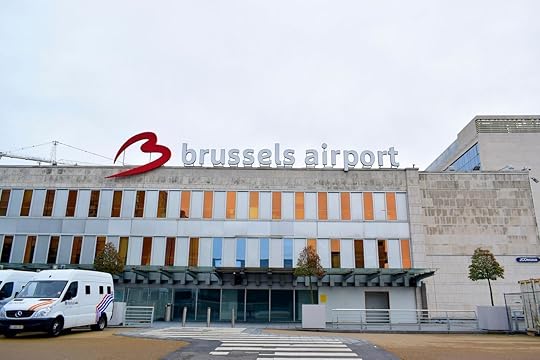
As more confirmed cases of the coronavirus materialize around Europe, Belgium is instituting new measures to keep closer tabs on its citizens traveling abroad. FPS Foreign Affairs is now asking Belgians traveling abroad to register online, with the aim of making it easier for the government to contact them in the event of any health-related issues. The new policy follows the quarantining of 110 Belgian travelers — among hundreds of others –at the H10 Costa Adeje Palace hotel in Tenerife.
According to FPS spokesperson Karl Lagati, “We are in close contact with tour operator TUI and the local embassy. Anyone who still has to leave to go to a foreign country, we ask to register. It will only take a few seconds and we will have their contact details, making it easier to contact them if there are any problems. Few people have that reflex when they go to neighboring countries, but this shows that it can be useful.”
To properly register, travelers are being asked to go to travelersonline.diplomatie.be before leaving for their trip. There are no plans to close the country’s borders right now, though Belgians traveling in Italy are being asked to abide by the warnings of the Foreign Affairs Ministry and exercise caution. 

More like this: Racist panic over coronavirus will not help the people of China
The post Belgium is asking its citizens to register online before traveling due to coronavirus fears appeared first on Matador Network.

Traditional Jordanian dishes
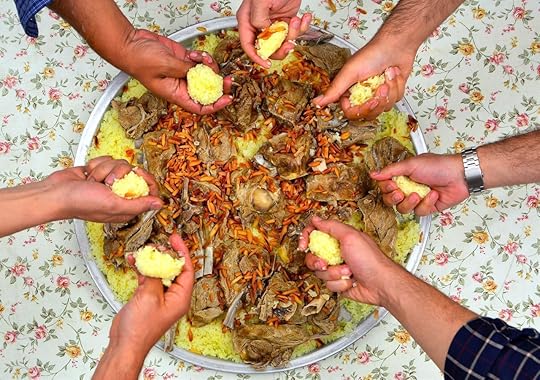
Jordan is widely known for its beauty thanks to the ancient city of Petra, the Wadi Rum Desert, and the Dead Sea. What gets less mainstream attention is the country’s rich culinary tradition. Jordan’s central position in the Middle East has long made it a crossroads of culture and a melting pot of food from North Africa, the Middle East, and the Mediterranean. Today, that history has made Jordan one of the most exciting areas for those who love to eat and drink. It is no coincidence that there’s a saying, promoted even by the Embassy of Jordan, that translates to, “Even when you’re full, you can still always eat 40 more bites of food.”
These six dishes, which draw on a variety of influences from the region, are some of the most classic must-tries on any trip to Jordan.
1. Manakish

Photo: PhotoHunterQais/Shutterstock
You’re likely familiar with pita bread, which is made with a slightly leavened wheat-flour dough that’s rolled into flat rounds and baked at high temperatures. Jordanian manakish is pita at its best. Typical to Levantine cuisine — which includes Palestine, Lebanon, Jordan, and Syria — the manakish is similar to a pizza but a bit fluffier on the inside and crunchy on the outside. It’s traditionally topped with some combination of za’atar (a spice mixture that often includes thyme, sumac, sesame, and others), cheese, and minced lamb. The origins of this dish are unknown, but flatbreads with toppings have been eaten in North Africa and the Middle East for thousands of years, and it seems only natural that the region’s most popular ingredients found their way as toppings.
2. Mansaf

Photo: Alaa AbuMadi/Shutterstock
Mansaf is the national dish of Jordan and comes from the Jordanian Bedouins, which are the nomadic Arabic people of Northern Africa, the Arabian Peninsula, and the Levant. The main ingredient in mansaf is lamb cooked in jameed (fermented goat milk yogurt), which is served with rice. The dish is traditionally served to honor a guest or on special occasions such as weddings, births, and graduations. Mansaf has an essential cultural role in Jordanian society. It’s traditionally eaten collectively from a large central platter using only the right hand. The required care and preparation time make mansaf the heart of the Jordanian cuisine.
3. Falafel
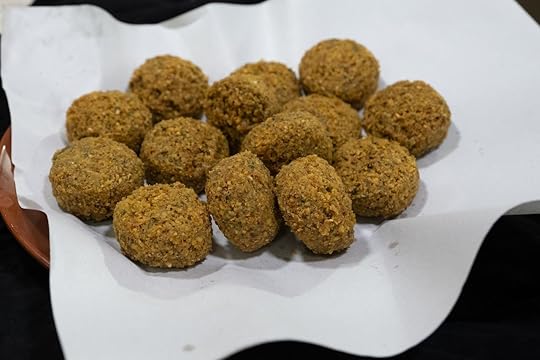
Photo: Sviluppo/Shutterstock
Falafel is, without doubt, the archetypical Middle Eastern dish. It’s a delicious, never greasy, deep-fried chickpea ball that’s flavored with a variety of spices (mostly cumin, garlic, and parsley) and eaten as street food or as a side dish. Despite being a common dish throughout Jordan, it’s not originally from the country. Falafel’s origin is disputed, but it’s believed to originally come from Egypt. With Jordan being so close to Egypt (Aqaba, in the south of Jordan, has always been a significant stopping point for Egyptian pilgrims traveling to and from Mecca), the falafel has found a second home with the Jordanian people. It’s one of the most delicious things you can eat in the country to this day.
4. Hummus

Photo: Alexander Turovsky/Shutterstock
Hummus, also known by its full name hummus b’tahini, is a creamy dip or spread made with chickpeas, tahini, garlic, and lemon. Like falafel, hummus is popular throughout the Middle East, though the true origin is unclear and likely long lost to history. Still, it’s safe to say that hummus is a staple in Jordan. It’s eaten for breakfast, lunch, and dinner, and is best enjoyed with fresh pita.
5. Zarb
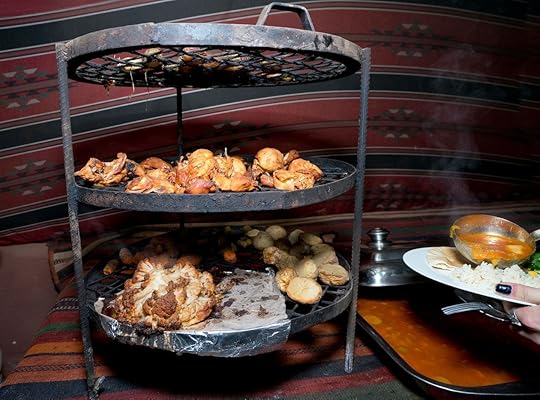
Photo: Huey Min/Shutterstock
Zarb is similar to Western barbecue. It’s the Bedouin way of cooking meat and chicken, and it deserves recognition for the cooking method alone, which is done in underground earthen ovens. The meat (chicken, goat, or sheep) is cut into small pieces and marinated in water, lemon juice, garlic, salt, and pepper. Vegetables (like potato, carrot, and onion) are also cut into pieces. Both the meat and the plants are then placed in a big underground pit and buried beneath the desert sand. The hole is covered with a few layers of blankets to hold in the heat. When the food is ready, it’s removed from the sand and served with rice on a communal tray that’s designed for sharing.
6. Baklawa

Photo: Eliane Haykal/Shutterstock
Baklawa, the Jordanian way to say baklava, is a sweet and flaky layered pastry that’s filled with pistachios or other nuts and sugar or honey syrup. It’s not a set uniform dish and comes in several varieties and shapes. The story of baklawa began long ago, and many countries claim baklawa as their own and prepare it in their own ways. In Jordan, baklawa is similar to the Lebanese style, and it’s cut into a variety of triangular, rectangular, diamond, or square shapes. Rosewater and orange blossom water can be added, but the crucial ingredient is the nuts, which are the star of every type of Jordanian baklawa. 

More like this: How to make tea the Berber way
The post 6 mouthwatering traditional dishes you can find in Jordan appeared first on Matador Network.

What is artificial vanilla extract

Vanilla is in our cupcakes, birthday cakes, and ice cream cones. It is sweetness personified, the taste of freshly baked chocolate chip cookies after dinner and licking frosting straight off the spatula. A little bottle of vanilla extract is a staple in pantries across America, and there is hardly a home baker in the country that questions where it came from when they pour a teaspoon into batter or dough. They definitely aren’t thinking about beaver glands. And yet these forest-dwelling, dam-building furry little creatures once played a central role in the production of artificial vanilla extract.
What beavers have to do with vanilla extract

Photo: adk91/Shutterstock
Beavers have sweet-smelling butts. The castor gland, located underneath the beaver’s tail distressingly close to the anus, produces a slimy brown substance called castoreum. In nature, beavers use castoreum to mark their territory. Thanks to a diet of tree bark, the goo has a musky fragrance similar to natural vanilla.
The properties of castoreum have made it a popular additive in perfumes and to enhance vanilla, strawberry, and raspberry flavors in foods like ice cream and yogurt. Don’t rush into your kitchen and purge all your vanilla extract from your cabinets or toss your vanilla ice cream from the freezer, though. Castoreum is rarely used to flavor food anymore, and even if it were, the FDA has ruled that it poses no health risk.
The biggest challenge to processing castoreum for use in food is that it’s challenging to harvest, as you might imagine. According to National Geographic, the process is complex and invasive. First the beaver must be anesthetized and the castor gland “milked” to produce the secretion. The entire experience sounds unappetizing (would you really want to use castoreum on your food after witnessing where it comes from?) and uncomfortable, for the beaver in particular.
Since at least 2013, only 300 pounds of castoreum have been produced annually. Going farther back, in 2011, one vegetarian non-profit asked five companies that produce natural and artificial vanilla if they used castoreum in their products. “All five unanimously stated that castoreum is not used today in any form of vanilla sold for human food use” and that it’s more common use is in fragrances. Any pearl-clutching articles you may have run across spreading panic that there’s beaver butt oil in your food are greatly exaggerated.
“It’s really gone out style,” Bryan Le Quoc, a food scientist at the University of Wisconsin-Madison, tells me. “The cost is prohibitive.”
Today, there’s no reason to believe that the artificial vanilla extract you bought at the grocery store contains castoreum. But even if you have an ancient bottle of vanilla extract hiding in the back of your cabinets or a frostbitten tub of vanilla ice cream you never bothered to throw away, Quoc says there’s no guarantee that the ingredient label would specify that it contains castoreum. Because the secretion is an animal product, it could fall under the “natural flavoring” label.
“That’s the trick that flavor companies use to hide the origins,” he says.
How artificial vanilla is actually made

Photo: David Tonelson/Shutterstock
According to Quoc, it’s much more likely that artificial vanilla is made by refining petrochemicals. Typically, two chemicals are combined to create vanillylmandelic acid, which, when it reacts to oxygen, produces synthetic vanillin, the main ingredient in imitation vanilla. About 85 percent of the world’s synthetic vanillin, or 18,000 metric tons every year, is produced this way, writes Quoc.
Any vanilla extract made from the petrochemical process has to be called imitation or artificial vanilla extract, and you can easily find bottles of vanilla extract made using this process at the grocery store.
“You can also produce vanilla from bacteria, like yeast,” Quoc says. “You can genetically engineer the yeast to basically transform sugar into vanilla flavor. Because it comes from an organism, under federal regulations, you can call it natural flavoring.”
Vanilla extract made from yeast or bacteria won’t appear in the baking aisle. Instead, it’s used to flavor foods like ice cream.
However, real natural vanilla extract comes directly from the vanilla bean.
Where natural vanilla comes from

Photo: Brent Hofacker/Shutterstock
Natural vanilla extract can be found at the grocery store and will likely be labeled with the country from which it was sourced, but it tends to cost more (some bottles run for as much as $22). Natural vanilla extract comes from the vanilla orchid, which, when pollinated, produces a pod containing vanilla beans. Cured and fermented beans are ground up and soaked in alcohol and water to create the liquid extract you find at the grocery store.
According to Quoc, Madagascar and Indonesia produce the majority of the world’s vanilla, a combined 6,000 metric tons every year. However, natural vanilla also comes from Mexico, China, and Tahiti.
You might also notice that some companies, like McCormick, use labels like “pure vanilla extract.” This term signifies that the vanilla extract in the bottle is natural, but it’s likely a mixture of vanilla from different sources. Single source natural vanilla extract will always be labeled with its country of origin.
Differences in flavor
Natural vanilla extract from a country like Madagascar is the highest quality. The aromatic, sweet, and musky flavor is creamy and complex. It’s great for desserts like ice cream or cupcake frosting, in which the vanilla flavor will stand out. For a hint of that creamy sweetness in a dessert-like chocolate chip cookies, which has more flavors to balance out the vanilla, artificial extract is suitable.
The bottom line is, although castoreum’s origins make it seem mysterious and even titillating, in terms of flavor, absolutely nothing is lost by adding a dash of chemically engineered artificial vanilla extract. But if you’re really that curious about what beaver secretions taste like in your baked goods, you can find vials of castoreum on Etsy. 

More like this: The surprisingly dark history of kefir, the fermented milk beverage of the Caucasus
The post The truth about artificial vanilla extract (and why you should always splurge for pure) appeared first on Matador Network.

Mardi Gras beads create huge waste

Mardi Gras is all about letting loose, having fun, and putting your worries aside, but for some, the Mardi Gras experience isn’t exactly joyous. For New Orleans cleanup crews, the holiday is a nightmare. Last year, officials said cleanup crews threw away over 608 tons of Mardi Gras-related debris. This includes beer bottles, food waste, and, most prominently, Mardi Gras beads.
At the conclusion of last year’s Mardi Gras celebration in New Orleans, city spokeswoman LaTonya Norton said, “We will be cleaning and re-cleaning areas for the next few days.”
In 2018, crews cleaned around 1,200 tons of debris from the city streets, and 1,300 tons in 2017. Last year’s cleanup required the efforts of 500 people, including city workers, temporary staff, contractors, and over 119 pieces of equipment.
New Orleans has implemented new sanitation and litter reduction programs, including one that encourages people to bring bags to Mardi Gras to dispose of their own trash, but it’s only a small step in the right direction.
“When citizens bag their trash,” said Norton, “it reduces the volume of windblown debris, food debris that becomes an attraction to rodents and birds, as well as debris that may enter storm drains.”
New efforts to recycle beads and other parade throws are also underway, with drop-off days designated for every fourth Saturday of the month and organized by ArcGNO. With another Mardi Gras quickly approaching, it remains to be seen whether the litter situation improves or declines from last year, and whether city officials will be prompted to take further measures to prevent waste. 

More like this: Everything you need to know before you go to Mardi Gras this year
The post Mardi Gras beads are creating an obscene amount of trash appeared first on Matador Network.

Human bone walls in Belgian church

European churches are known to have some intriguing and creative architectural features, but a wall made of human leg bones is a bit more inventive than you might have expected. While excavating the grounds of Saint Bavo’s Cathedral in Ghent, Belgium, ahead of the planned construction of a new visitor center, archeologists discovered entire walls made of human bones. Reportedly, sometimes in the 17th and 18th centuries, residents of Ghent dug up old burial grounds and, to make room for new graves, stocked the bones in nine separate walls under the cathedral.

Photo: Ruben Willaert bvba/Facebook
The deliberately constructed walls, built largely from adult thigh and shin bones from the second half of the 15th century, likely served as primary construction materials for the builders. The Brussels Times reports that “between the walls, the space is filled with skulls, many of them shattered.”
Janiek De Gryse, the archeologist leading the excavation, told Live Science, “[In Belgium] we have never seen structures, like walls, which are intentionally built with human bones.”

Photo: Ruben Willaert bvba/Facebook
Above the walls, full human skeletons were also discovered.
The walls represent a utilitarian use for human remains, which De Gryse explains, would not have been thrown away upon discovery “given that the faithful believed in a resurrection of the body, the bones were considered the most important part.”
The bones will now be housed at the University of Ghent where they will be examined and inventoried. 

More like this: 7 of the world’s coolest-looking churches you didn’t know existed
The post Walls made of human bones discovered under Belgian church appeared first on Matador Network.

London's childhood museum renovating

If you’ve already knocked out all of London’s must-see museums, there will soon be a reason to revisit the V&A Museum of Childhood. On May 11, the museum will close for a serious revamp, which will be aimed at making the space more child-friendly. “The new museum will be shaped in entirety around the way in which children aged 0-14 explore, play, and learn,” the museum’s website explains.

Photo: V&A Museum of Childhood
The V&A Museum of Childhood is currently home to 26,000 objects dating back from 1600 to the present day. There are over 100 dolls houses, board games, vehicles, nursery equipment, toys, and clothes, as well as painting, drawings, and photographs all focusing on the world of children.
The museum’s transformation will include displaying objects at toddlers’ heights and creating more hands-on experiences to foster creativity.
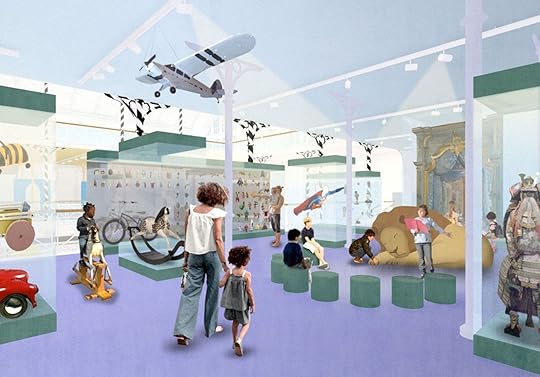
Photo: V&A Museum of Childhood
The museum will revolve around three new galleries. The first, called Play, will feature games that encourage children to play freely and get creative. Imagine, the second gallery, will focus on storytelling and screenwriting with a Hollywood theme that includes popular movie characters and costumes, and the Design gallery will encourage outside-the-box thinking with an artist-in-residence program. The Stage, a theater with a 125-person capacity, will allow children to perform their own shows.

Photo: V&A Museum of Childhood
Before it closes on May 11, a three-day festival will be held on May 8-10, so people can bid the museum farewell. It’s slated to reopen in spring/summer 2023, though an exact date hasn’t yet been specified. 

More like this: 12 pro tips for taking your kids to the museum
The post V&A Museum of Childhood in London is closing to undergo massive revamp appeared first on Matador Network.

Austria restrictions for coronavirus

As the coronavirus takes root in Italy and people fear for its spread across Europe, Austria is taking steps to protect its citizens. On Sunday, Austria suspended train services to and from northern Italy for four hours to test two passengers suspected of carrying the coronavirus. The train, which came from Venice and was heading to Munich, continued on as the travelers were tested negative.
Northern Italy — which borders Austria, Switzerland, and France — is currently on lockdown following an outbreak of the virus over the weekend. On Monday, February 24, 2020, the World Health Organization reported 124 confirmed cases and two deaths in Italy.
According to Austrian chancellor Sebastian Kurz on Monday, “As far as the borders and cross-border traffic are concerned, we will proceed as follows: we will further tighten warning systems with our neighbours; [and] we will immediately order a stop in the event of suspected cases, as happened last night.”
The European Union’s Schengen Zone ensures that any person, no matter their nationality, may cross the international borders within the EU without any border control. Although EU nations can temporarily reintroduce border checks in case of a serious threat to public policy or internal security, no EU country has yet chosen to impose this measure to limit the spread of the new coronavirus.
As of Monday, Austria reported the first two cases of the virus in the country. 

More like this: Everything travelers need to know about the coronavirus outbreak
The post Austria will stop people suspected of carrying the coronavirus at the border appeared first on Matador Network.

February 24, 2020
Where to see rocket launches 2020

Rocket launches aren’t just for Florida anymore. Noting that the second-most-popular tourist attraction in Central Florida is the massive Kennedy Space Center, the rest of America — and the world – has begun developing tourism around the awe-inspiring experience of watching a rocket shoot into space. And many of them are in places worth visiting for more than just the launch. Though our American launch pads are easily the most accessible, if you were planning a trip to South America, Japan, or a number of other equatorial destinations, you may want to plan them around a launch. Here’s a look at where you can catch them this year.
1. Cape Canaveral/Kennedy Space Center, Florida
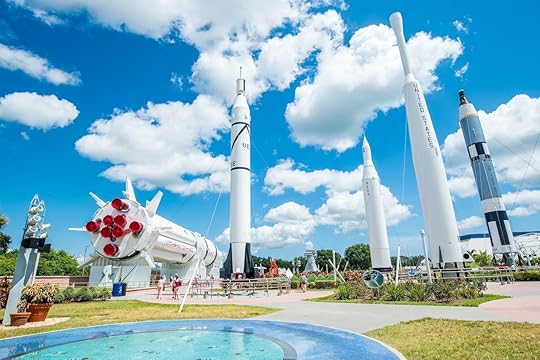
Photo: NaughtyNut/Shutterstock
Launch dates: March 2, 4, 19, 30; April 29; May 7; July 17; August 5; and others to be determined throughout the year
Far and away the world’s most prolific spaceport, Cape Canaveral and the Kennedy Space Center in Central Florida will be launching everything from SpaceX space station resupply missions to the much-anticipated Mars rover on July 17. It’s the most visitor-friendly launch site, with a massive museum and visitors center to get you behind the action once the launch is over.
Getting there: Fly into Orlando International Airport (MCO) and drive the 45 minutes or so to the Space Coast. If you’re road-tripping, the space center has multiple exits off I-95.
How to watch: Kennedy Space Center has designated viewing areas you can buy tickets for in addition to your regular admission. Some are as close as 2.3 miles from the launch pad and are undoubtedly the best seats in the house. If you don’t want to pay, the beach parks in Cocoa Beach and Titusville still have fantastic vantage points and give you the opportunity to lie on the sand while you wait. In Port Canaveral, head to the top of the Exploration Tower and get a panoramic view of the launch, or watch through the tower’s telescopes.
Where to stay: It’s wholly possible to stay in Orlando and drive over for the launch. But if you want to avoid traffic and sleep in an extra hour, you’ll find plenty of hotels in Titusville and Melbourne, both short drives from the center.
2. Centre Spatial Guyanais, Kourou, French Guiana

Photo: Matyas Rehak/Shutterstock
Launch dates: March 23-24, April 10, June, and additional launch sometime in 2020.
If you’re not super into space travel, you probably wouldn’t know that Europe’s largest spaceport isn’t even in Europe. France takes full advantage of the geographic and weather advantages of its South American department and launches most of Europe’s rockets from this port on the Caribbean coast. This year’s most notable launch will come sometime in the middle of the year, with the debut of Europe’s new Vega C rocket.
Getting there: To put it mildly, getting to French Guyana isn’t easy. The only major airport in the country is Cayenne (CAY), which is only accessible via other French Caribbean airports in Guadeloupe, Martinique, and Haiti. Connections through those airports all involve overnight stays, so it may actually be more efficient for you to fly to Paris and jump on a nonstop from there. You could also try and road trip it from Suriname or Brazil, but you’d really need to be down for an adventure.
How to watch: The space center offers limited seating at several viewing areas around the space port, some as close as three or four miles away. You’ll need to contact the port to make a reservation, and you must be at least 16 years old to watch from the closest platform. The seats are free, but if you can’t snag one you can also watch from the beach at Kourou, which is rarely crowded.
Where to stay: Though not a thriving metropolis like Orlando, Kourou has a number of hotels in the three-to-four star range that should suffice for a viewing. Limited supply makes them more expensive than you’d expect, so if you want to save money, you can try staying in Cayenne, about an hour away.
3. Vandenberg Air Force Base, California
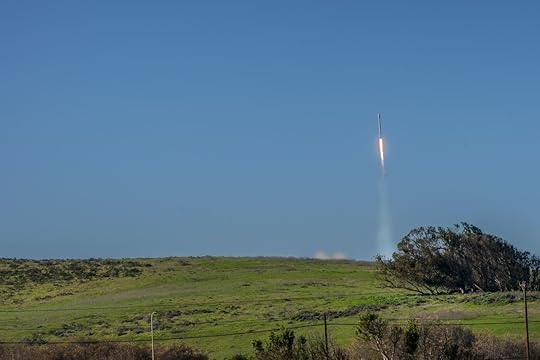
Photo: Claudine Van Massenhove/Shutterstock
Launch dates: November and additional launch in the fourth quarter of 2020.
The tricky part about viewing a launch here is the dense fog and mountains that surround the launch pads, meaning you might plan a whole trip around watching an event that’s invisible from more than a few feet away. Still, this year will see two fall launches, one of a spy satellite and the other a SpaceX Falcon 9 satellite dispatched to record sea level data.
Getting there: The nearest airport will be Santa Barbara (SBA), which is about an hour away by car. Otherwise, LAX is about three hours away depending on traffic. If you’d rather drive, Vandenberg is a scenic ride up US-101 and the Pacific Coast Highway.
How to watch: Again, the fog along the California coast can make viewing difficult, and since the base is closed to the public on launch days, your best bet is to pull off to the side of the road at an elevated vantage point. Harris Grade road sits above the fog line and offers the best view on a foggy day. If it’s clear, you can post up in Providence Landing or off Corral Road too, though you still won’t see the rocket until it’s above the mountains.
Where to stay: Santa Barbara will offer the best overall visitor experience if you’re okay to drive an hour for the launch. Otherwise, Lompoc is the nearest city and has a wide selection of mid-range hotels.
4. Baikonur Cosmodrome, Kazakhstan

Photo: Nostalgia for Infinity/Shutterstock
Launch dates: March 18, 30; April 9, 25; July 23; July 26; October 14; and December 11. Russia’s version of Cape Canaveral is, appropriately, in an area the complete opposite of balmy Florida: the unforgiving steppes of southern Kazakhstan. It was the world’s first spaceport, launching Sputnik 1 in 1957, and has been home to most Soviet and Russian launches ever since. Interestingly, the port is nowhere near the tiny mining town of Bakinour, but the name was used to misdirect the rest of the world from knowing where the Soviets launched. Today it’s no big secret, but it’s not exactly welcoming either.
Getting there: Since the Soviets were big on remote secrecy, Baikonur isn’t easy to reach. The nearest airport is in Kyzylorda (KZO), and flying there generally involves three or four connections. Then you face a four-hour train ride to the site. You can also get direct flights from Moscow on aging Russian airplanes. Your best bet is booking an organized tour, which will run you well into the thousands of dollars.
How to watch: Again, booking a tour is your best bet, though access to the notoriously hard-to-reach base isn’t always guaranteed. Public access isn’t really possible without booking a tour, though, so you might try driving to a spot northeast of the cosmodrome, which puts you right in the rocket’s path.
Where to stay: Booking a tour will get you a night or two in a nearby hotel. Otherwise, there’s not much out here, so your best bet may be trying to camp.
5. Wallops Island Flight Facility, Virginia

Photo: Adam Parent/Shutterstock
Launch dates: March 31, October, and additional launches in the second and fourth quarters of 2020.
Perhaps the most up-close and personal launch experience in the world is at this flight facility on the southern tip of the Delmarva Peninsula. Here you can watch Antares and sounding rockets take off right in the visitors center, less than a mile from the launching pads. The launches are free and open to the public, and allow you to listen to the radio contact with mission control over the PA system for a fully immersive experience.
Getting there: Wallops Island is about a three-and-a-half-hour drive from Washington, DC, and two hours up US-12 from Norfolk.
How to watch: Get to the visitor’s center as early as possible on launch dates, as space in the bleachers fill up fast. For launches during hours, the center isn’t usually operational; it opens 90 minutes before the launch. If you can’t get in there, try the Chincoteague National Wildlife Refuge and Chincoteague Island, both of which offer outstanding vantage points.
Where to stay: Downtown Chincoteague is the closest place with hotels and is a charming little waterfront town to spend a couple of days.
6. Tanegashima Space Center, Japan

Photo: jo9/Shutterstock
Launch date: May
Though it only has one launch this year (a supply rocket to the International Space Station), Japan’s main spaceport is worth visiting for the surrounding scenery alone. The island of Tanegashima, about 25 miles south of Kyushu, is also full of some of Japan’s best beaches, as well as good surfing and warm weather.
Getting there: Flying from Tokyo, you’ll connect in Kagoshima to Tanegashima airport (TNE) on a journey that takes about three hours in total. Alternatively, you can fly to Kageshima and take a scenic ferry ride over. You can also get nonstop service to TNE from Osaka.
How to watch: Though the Rocket Hill Observatory is closed on launch dates, you can still watch launches for free from Uchugaoka and Hase parks. When the launch is over, you can also visit the space center’s museum for free and arrange guided tours of the entire complex with advance reservations.
Where to stay: Tangeshima has plenty of hotels in all price ranges.
7. Wenchang Space Center, China

Photo: zhangjin_net/Shutterstock
Launch dates: March, April, July, and additional launch late 2020
With a massive asterisk around anything involving China this year, planning a trip to the tropical shores of Hainan Island might be the best vacation for an overseas launch. A few years ago, the Chinese sought to develop space tourism here and have made it quite Canaveral-like, with a full-service museum, interactive exhibits, and a hotel boom to accommodate all the visitors.
Getting there: The nearest airport to Wenchang is Haikou (HAK), which has direct flights from Beijing, Shenyang, and other Chinese mainland cities. Alternatively, you can take a ferry to Haiku from Hainan and Beihai. From Haikou it’s about a one hour and 45-minute drive to Wechang.
How to watch: In true Chinese fashion, the viewing gallery at Wenchang is beyond the scale of anything in America, with seating for 25,000 people. If you don’t feel like cramming yourself in, the views from hotel balconies in the city of Wenchang also offer pretty solid views.
Where to stay: No shortage of hotels in Wenchang, most of which offer beach access to boot. 

More like this: 12 stargazing events you don’t want to miss in 2020
The post Where you can see rocket launches in 2020 appeared first on Matador Network.

LGBTQ guide to Washington, DC

When you think of Washington, DC, perhaps you flash to a photo of the capitol building and the White House. Maybe you picture a crowded senate floor or a news anchor standing in front of the Supreme Court. DC might not, however, be one of the first places you think of when you think of LGBTQ+ travel destinations. That’s not entirely DC’s fault since first and foremost it’s the capital of the United States and is typically associated with lawmaking and politics. But if you peel back a few of the city’s layers, you’ll find more than just busy bureaucrats. Firstly, Washington DC is filled with activists, protestors, and other LGBTQ advocates on the frontlines of change. (This was, of course, ground zero for the fight for marriage equality). But apart from the politics, you’ll find neighborhoods with unique personalities, a thriving queer nightlife scene, and a vibrant and diverse LGBTQ community.
LGBTQ travelers visiting DC can explore world-class museums, dine on locally sourced menus, and hit up several bars and clubs that specifically cater to the LGBTQ community. To help you make the most of your time in the capital of the United States, we’ve created this list of some of the best things to see and do and where to drink, eat and sleep in Washington, DC.
Outdoor spaces and neighborhoods
Logan Circle

Photo: Jon Bilous/Shutterstock
There are rainbow banners on the light poles in Logan Circle that state “LGBTQ pride is Evey Day.” Logan Circle’s outward show of love for the gay community goes beyond just signage, though. The Washington Blade, an LGBTQ newspaper, is based out of this neighborhood as are several trendy and hip bars and restaurants including Pappe and Trade.
Adams Morgan
You’ll find everything from coffee shops and bars to jumbo slice pizza, psychics who’ll give you a reading for $5, and tattoo parlors in Adams Morgan. The sidewalks and outdoor seating areas buzz with both locals and tourists throughout the day, and as the sun goes down, the music turns up, and the fun begins. Best bets for the LGBTQ community include Songbyrd, Tryst, Pitchers, and A League of Her Own where you can safely enjoy a drink in a queer-friendly space.
Dupont Circle
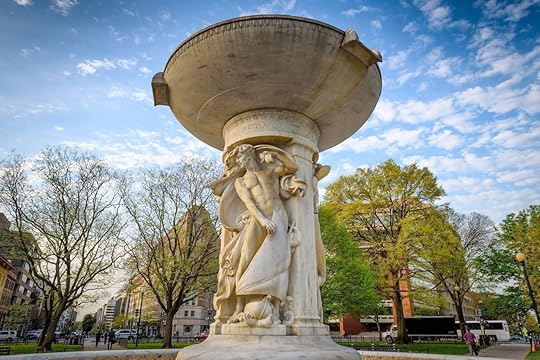
Photo: Truba7113/Shutterstock
Just south of Adams Morgan you’ll find Dupont Circle, which, to the uninitiated, is more than just a traffic circle with a park in the middle. Dupont Circle is an entire neighborhood, and in addition to a number of embassies and historic homes within its boundaries, it’s also got a mixture of both retail chains and small, local businesses and bars. It’s long been known as one of DC’s “gayborhoods” and is the host of the Capital Pride Parade.
The National Mall
The National Mall in DC isn’t a shopping mall or even an open-air market. It’s a wide-open area that’s home to the Lincoln Memorial, the Reflecting Pool, the Washington Monument, and many other monuments and memorials. It’s also a place where people come to hang out, walk, run, picnic, toss a football, and sometimes even gather to protest and march. No trip to DC is complete without at least stepping foot on what’s been nicknamed “America’s Front Yard.”
Capitol Hill

Photo: lazyllama/Shutterstock
This neighborhood is close to the action, politically speaking. The US Capitol, the Supreme Court, and the Senate and House are all located here. It’s more than just the heart of the United States government, though, Capitol Hill is also a place where people live and play. You’ll find neat rowhomes as well as the thriving and bustling Eastern Market where you can pick up all kinds of fresh food and locally-made arts and crafts.
Museums and other places of interest
Human Rights Campaign Headquarters

Photo: Kristi Blokhin/Shutterstock
The HRC is the largest LGBTQ civil rights organization in the country, and it’s been on Rhode Island Avenue since 2003. Though the public can’t just pop in for a tour of the place, you can rent out its event space, the Equality Center, or stand for a photo op under the blue and gold logo out front of the building.
Where: 1640 Rhode Island Ave. NW
Supreme Court
The highest and most powerful court in the country is open to the general public most Mondays and Fridays between 9:00 AM and 4:30 PM. If you’ve been even remotely interested in the law as it pertains to LGBTQ persons and allies, this is one place you won’t want to miss. Visiting has a way of bringing the abstract into reality for a lot of visitors and is a great place to awaken the activist in us all.
Where: 1 First Street NE
Busboys and Poets
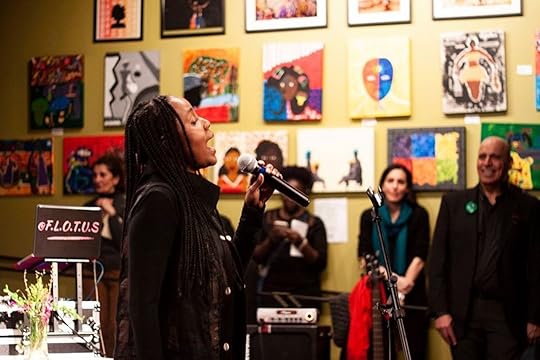
Photo: Busboys and Poets/Facebook
Part coffee shop, bookstore, and restaurant, Busboys and Poets is a place where DC residents gather for open mic nights, author readings, music, and a general love of reading. The original location is on 14th and V street but its success has led to six other locations sprinkled across the city, all of which continue to foster a deep sense of community. This is as safe a space for the LGBTQ community. They have hosted numerous LGBTQ events including Taking the Stage, Taking a Stand: LGBTQ Voices Against Violence.
Where: 2021 14th St NW
The DC Center for the LGBT Community
The DC Center for the LGBT Community hosts numerous events throughout the year in an effort to, as its mission states, educate, empower, celebrate and connect the community. It hosts monthly art markets, opens its doors for meals during the holidays, and occasionally offers guided LGBTQ history walks through the city.
Where: 2000 14th Street NW, Suite 105, Washington, DC 20009
Smithsonian National Museum of American History

Photo: V_E/Shutterstock
One of the best things about visiting DC is the number of museums available for you to explore, many of which are free. The National Museum of American History has a fairly new exhibit to share. In June of 2019, it opened an exhibit titled Illegal To Be You: Gay History Beyond Stonewall that is a powerful reminder of the struggles the LGBTQ community has endured, as well the ones it still faces. The exhibit will be up through spring 2020.
Where: Constitution Ave, NW between 12th and 14th Streets
Kramerbooks and Afterwords
Browse and sip in this small-ish bookstore just off Dupont Circle. It’s a well-known safe space for the LGBTQ community with friendly staff who can point you towards their section on gender, which includes many different titles specifically related to LGBTQ studies. Bonus: Check out the Social Justice Book Club, which meets on the third Wednesday of every month.
Where: 1517 Connecticut Avenue NW
Bars and nightclubs
Red Bear Brewing

Photo: Red Bear Brewing/Facebook
Seems like every city you visit these days has more breweries than it knows what to do with. There’s no shortage of breweries on DC’s map, but if you can only pick one we recommend Red Bear Brewing. This gay-owned local business is both a safe space for the LGBTQ community and a great place to drink some unique beers, like their porter dubbed DC Dirt.
Where: 209 M Street NE
Number Nine
Number Nine is a gay bar that’s part of the Logan Circle neighborhood. It sits across from a Whole Foods and is a very short walk from all the trendy bars and restaurants that line 14th Street. It manages to stand out from the crowd, though, with its happy hour on every day from opening until 9:00 PM. The downstairs has a plush L-shaped booth in the window and a herringbone pattern on the floor, which, combined with the decor, gives the space an upscale feel. In addition, it regularly hosts happy hours and fundraisers for the LGBTQ community.
Where: 1435 P Street NW
Nellie’s Sports Bar

Photo: Nellie’s Sports Bar/Facebook
If you’re going to spend a weekend in DC, then prepare to brunch. Because DC does brunch, and it does it well. Nellie’s is a great pick. You’ll need tickets for the drag brunch, but it includes the show, an all you can eat buffet, a drink, and the tip. If you can’t make it to the brunch or tickets are sold out, no worries — they have something going on every single day of the week. Bingo, trivia, ping pong, etc. Their Instagram calls them “…a meeting place for all things sports and LGBTQ+!”
Where: 900 U Street NW
Trade
Just a short walk from the mentioned Number Nine, Trade is also located in Logan Circle and is known for its huge happy hour cocktails, which it calls its XL Happy Hour. You’ll know you’re in the right spot when you see the big rainbow taped on the outside window. Grab a seat in the window and people watch or show up later for one of their events. They’ve usually got something special going on at least four nights a week. And if you’re lucky enough to be in town for New Year’s Eve, you can take part in their New Queers Eve celebration with a few shows, music, and booze.
Where: 1410 14th Street NW
Pitchers and A League of Her Own

Photo: Pitchers DC/Facebook
At the bottom of 18th St NW, just before it intersects with Kalorama, you’ll find a grey building that houses both Pitchers and A League of Her Own. Pitchers caters to gay men, and the downstairs, A League of Her Own, is, as the name suggests, for the lesbian crowd. Both spaces have an easy-going sports bar vibe with TVs on the walls and a few areas where you can play video games. Though there are separate entrances to both places; once inside you can access either bar.
Where: 2319 18th Street, NW
Ziegfeld’s/Secrets
Ziegfeld’s/Secrets is a two-for-one venue for the LGBTQ crowd that specifically caters to those who love drag. You can expect nude male dancers, VIP table service, and DJs. They also hold amateur contests for cash prizes, and for those of you who have always wanted to be in the spotlight, they have open dancer auditions that they call “New Meat” every Thursday.
Where: 1824 Half Street SW
Sleaze at the Wonderland Ballroom
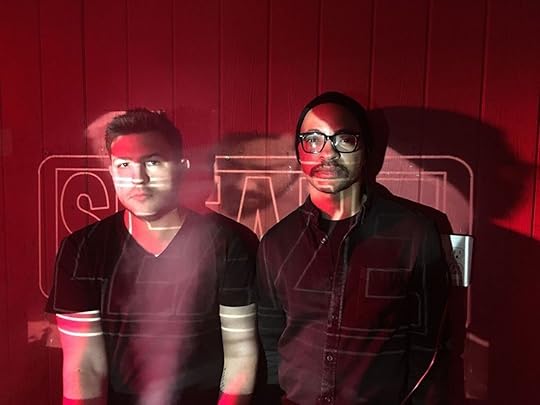
Photo: Sleaze/Facebook
If you’re going to visit DC, try to make it near the beginning of the month so you can hit up one of the coolest parties in the city, Sleaze at the Wonderland Ballroom. It takes place during the first Thursday of every month and includes drinks, drag, and dancing, as well as music by DJ Keenan Orr and DJ Lemz.
Where: 1101 Kenyon Street NW
DC Eagle
Once a year a new Mr. and Ms. DC Eagle is crowned at this self-described leather/fetish bar. This contest dates back to 1982 for men. Ms. DC Eagle was established in 2019. The crowning of Mr. and Ms. DC Eagle is just one of many events held at this bar throughout the year. Karaoke and drag shows are weekly staples at the DC Eagle.
Where: 3701 Benning Road NE
Songbyrd
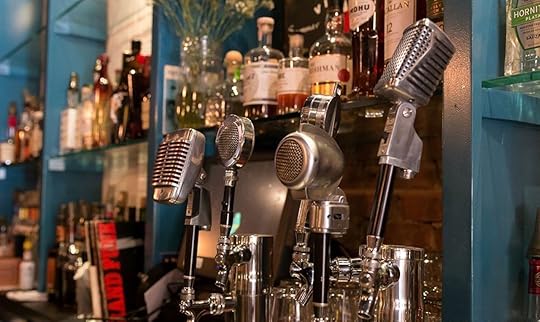
Photo: Songbyrd Music House & Record Cafe/Facebook
Old boom boxes, a gay flag, and some cool vintage stadium seats greet you out front of this all-in-one cafe, roastery, music venue, restaurant, and bar. The vibe is laid-back and chill, and the weekday happy hour means $2 off draft beers. Stop in for a show or to record something — a song, a poem, a memory — on their Voice-O-Graph. You get a little over a few minutes to say or sing anything you like and have it pressed on vinyl, and the cost is only about $15. Oh, and if you need Halloween plans, checkout Songbyrd. In 2019, they teamed up with The Qrew, an inclusive queer community, and hosted HalloQween.
Restaurants
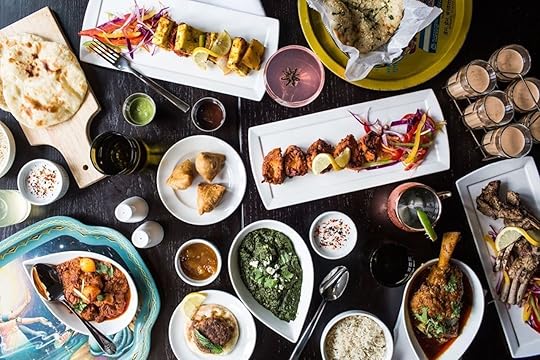
Photo: Pappe DC + Reema Desai/Facebook
Pappe
Step under the rainbow flag and inside Pappe for brunch, lunch, or dinner and treat yourself to some of the most delicious Indian food you can find in DC. The menu has several entrees including Palak with chicken, as well as lots of dishes to share. There are several naan options, but you can’t go wrong with the garlic naan. If you’re looking for a place to eat during Pride, head to Pappe as it features True Colors Cava, which donates a portion of their sales to the LGBTQ community.
Where: 1317 14th Street NW
Annie’s Paramount Steakhouse
Annie’s has long been regarded as a safe haven for the LGBTQ community. In 2019 it was named an American Classic by the James Beard Foundation. The restaurant has been an anchor in the community since it opened its doors in 1948. There’s a famous story that’s told over and over at Annie’s about two men who were holding hands under the table but when spotted by Annie, she told them, “You don’t have to hide that here,” and encouraged them to hold hands on top of the table. That same sentiment still greets customers today.
Where: 1609 27th Street NW
The Duplex Diner

Down to earth, unpretentious, and reasonably priced are three of the things that come to mind when you mention the Duplex Diner. In addition to its $10 hamburger, the Duplex Diner has a great specials, including the All Day Rosé and Tuesday night burger night, which is half-price burgers. But one thing that might really catch your eye is their LGB-Tea. Word to the wise … it’s made with Bulleit Bourbon.
Hank’s Oyster Bar
One quick scroll through Hank’s Oyster Bar’s Instagram feed will most likely get your mouth watering, but if for some reason the visuals of the freshly shucked oysters, lobster bisque, and peel-and-eat shrimp aren’t enough, know that they’re LGBTQ owned and proud of it. There are four locations, but we recommend the one in Dupont Circle.
Where: 1624 Q Street NW
Right Proper Brewing
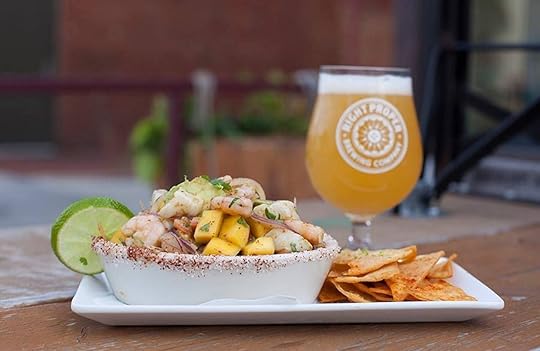
Photo: Right Proper Brewing Company/Facebook
There are two Right Proper locations: One is the brewpub with a restaurant that’s located in Shaw, and the other, on Girard Street, is where they make the beers. If you want to take a tour, head to the Girard Street location. If you want to settle in for some good conversation and some food, head to the one in Shaw. Both locations offer up not only delicious, hand-crafted beers that are brewed on-premises but also a safe space. Be on the lookout for some of their Pride gear. They sell cool tanks and t-shirts and even brew a specialty beer or two for the occasion. In 2019, they brewed a wheat ale called “Brewed This Way.”
Where: 624 T Street NW
Accomodation

Photo: HighRoad Hostel Washington DC/Facebook
HighRoad Hostel
Located right in the heart of Adams Morgan, the HighRoad Hostel gives you great access to both Pitchers and A League of Her Own, both mentioned above. They’re literally a two-minute walk from the hostel. In addition to a great location, the HighRoad Hostel also has a nice common area with a couple of charging stations and computers that makes it a great place for meeting people. And in case you have any doubt about whether or not the gay community is here, there’s always friendly staff to greet you and gay flags over the WiFi password poster. Pro tip: The hostel looks like a brick row home, and there aren’t any big signs, so put the address into your GPS.
Where: 1804 Belmont Road NW
The Darcy
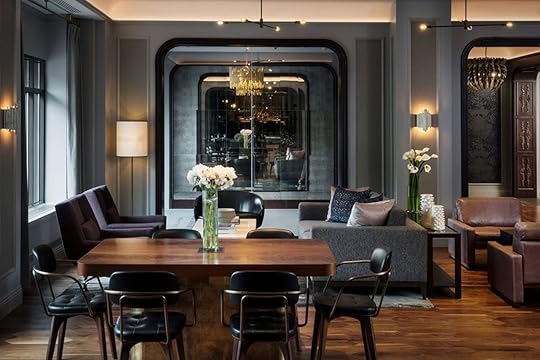
Photo: The Darcy/Facebook
There’s a gay flag flying above the entrance to the Darcy, a boutique hotel, in between Dupont Circle and Shaw, and they even go so far as to state on their website that they’re LGBTQ-friendly. If you’re traveling to DC for pride, this hotel is centrally located and ready to welcome you with open arms.
Where: 1515 Rhode Island Ave NW
Events
Capital Pride

Photo: Capital Pride/Facebook
June 1975 marks the first annual Pride event in DC. Each year since then, the Capital Pride Alliance organizes one of the largest pride events in the country. The Incrediball: The Capital Pride Honors and Kick-Off Party is held at the start of the event. The night includes dancing, drag performances, and an open bar. There are numerous events throughout the Capital with the Pride Parade and Festival closing out the week.
Pride Night OUT Series
Team DC organizes Washington’s “Pride Night OUT Sports Series,” which means themed events for the LGBTQ community at home games for the Redskins, Capitals, Nationals, DC United, Mystics, Prodigy, and more. There are typically rainbow-adorned memorabilia/souvenirs at these events in the form of t-shirts and flags. Last year, some of the members of the Capitals, DC’s professional ice hockey team, even warmed up with rainbow-adorned hockey sticks.
Annual Metro DC PFLAG Pride Party
Red Bear Brewing Company, a gay-owned business, has teamed up with PFLAG to put on a pride party. The event consists of music, a silent auction, and, of course, craft beer. All proceeds go to supporting the Metro DC chapter of PFLAG and its programs.
Youth Pride Day
Once a year the LGBTQ community comes together to put on the annual Youth Pride Day. The event is put on by the non-profit Youth Pride Alliance and is held in Dupont Circle. Performers, speakers, and service providers are all on-hand for this event to help bolster visibility, equality and social justice for younger members of the LGBTQ community. 

More like this: How to see the National Museum of African American History and Culture in a day
The post The ultimate LGBTQ guide to Washington, DC appeared first on Matador Network.

How Brazilian food honors Nigeria

As part of my voyage of the heart to heal from the sudden loss of my mother, Grace, I headed far afield to Brazil, a country she loved wholeheartedly yet never visited. During my mission to forget her passing, I encountered many a reminder of her aliveness, the dishes she cooked, and the tales she told of the place she was born: Nigeria.
I arrived in time for Rio Carnival, which promised samba, pulsating revelry, and splashes of glitter. But the world’s grandest street party also brought me closer to a dish that defined my childhood. Feijoada — greasy, delightful black bean stew — ferried me right back to my mother’s rumbling African kitchen.

Feijoada is Brazil’s national dish. This hearty bean stew is typically made with the most undesirable cuts of meat: pig ears, tongue, snout, tails, and trotters. It’s served with white rice and vegetables and lovingly prepared over many hours. Beans are soaked. Meat is prepared. Garlic is chopped. The result is a symphony of textures and aromatic brilliance that’s strikingly familiar to the rice and beans my Nigerian often prepared at home. Feijoada is also topped with toasted cassava or farofa, which is comparable to garri, a dietary staple in Nigeria.
When you peel back the layers of Brazilian cuisine, you’ll uncover Portuguese, Spanish, German, Japanese, and African influences. When Africans were brought to Brazil as slaves in the 1500s, they took their cooking traditions and ingredients along with them, from dendê (palm oil), coconut milk, and banana to chili peppers, smoked and dried fish, and quiabo (okra).
The Nigerian influence in Brazilian cuisine is most pronounced in the northeastern province of Bahia. Bahian mingau de maizena resembles akamu corn porridge, which is wildly popular among Nigeria’s Igbo people. Bahians also eat acaraje bean patties, which Yoruba Nigerians know as akara.
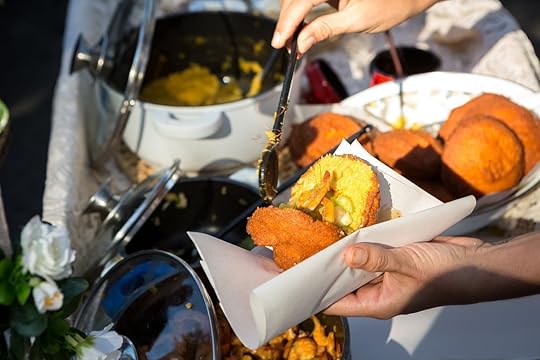
Photo: Will Rodrigues/Shutterstock
These fried fritters were often the stars of my food daydreams growing up, and I’d beg my mother to make them on weekends when she wasn’t working. I’d drool over them even while clasping them in my oil-glazed fingers. My time in Brazil would unearth an encyclopedia of Nigerian culinary flavors that were already familiar to me. Traveling to the cidade maravilhosa just as carnival cast its spell turned out to be more of a homecoming than I imagined.
I had traveled to Rio de Janeiro solo though I learned that a fellow nomad by the name of Erez would also be celebrating there at the same time. Erez, a jovial Israeli with a penchant for large feather hats, chose Rio Carnival’s Sergeant Pepper block party as our initial meeting point. This turned out to be a serendipitous choice: My mother was slightly raving mad about The Beatles.
I was trying to run away from it, but Grace’s spirit was everywhere: in the food, in the music, and in the warmth of the people I met. Farofa-covered sausage in one hand and a can of Antarctica beer in the other, I danced and felt tears of joy welling up. The band played a peculiar samba version of “Hey Jude,” her favorite song, and tears of joy and sadness wet my cheeks. Perhaps the song concealed a message from my mother: “The minute you let her under your skin, then you begin to make it better.” Maybe I was right where I needed to be and needed to feel my way through my sadness at one of the most jubilant celebrations in the world.

Many of the widely held perceptions of Brazilian culture are synonymous with my mother’s character: boisterous warmth, fondness of a good party, and joie de vivre. Growing up, the sounds of bossa nova, Seu Jorge, and Kaoma’s “Lambada” regularly infiltrated our home, and we celebrated several of her birthdays at churrascarias, Brazilain barbecue restaurants. Through food, music, and dance, I learned how to be her daughter.
Grace would have adored tucking into Afro-Brazilian dishes such as caruru, in which okra, palm oil, and dried shrimp are its star ingredients. She’d be surprised to find our beloved mandioca frita (fried cassava) available as a snack, purchasable under Lapa’s arches or as street food at one of Rio’s beaches.
Amid the backdrop of Rio’s celebrated carnival, I found great comfort. Brazil gave me a fresh stream of ways to enjoy my mother and relive our old memories despite, the painful permanence of our inability to create new ones. She may no longer be able to make my favorite Nigerian comfort food, but I can take comfort in the knowledge that I can find it in Brazil. 

More like this: Bahia is the best place to eat in Brazil. Here are 9 dishes that prove it.
The post After my mother died, I reconnected with her Nigerian heritage through food at Rio Carnival appeared first on Matador Network.

Matador Network's Blog
- Matador Network's profile
- 6 followers



